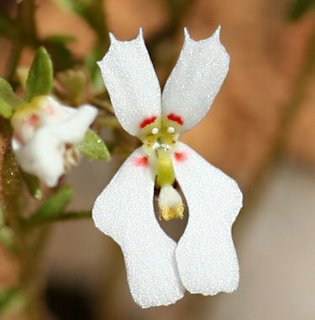Itchy triggers
This is an annual, up 20cm tall, with a long season from October to January. The common name refers to the fact that the flower closes like a book at night or in cold weather, obviously to save itself for when its specialist pollinators are out and about.
The flowers are white or shades of pink, and can be sprinkled as liberally as confetti around granite outcrops, edges of gravel roads and other water-gaining sites. The trigger is hinged so it strikes upwards, hitting the insect on the ventral rather than dorsal side. I wonder if that is more or less of a shock?
This is quite a widespread species, being found over most of the south west. It's also found in other states. WA has 70% of Stylidium taxa, so is a centre of Stylidium diversity, and the Busselton-Margaret River-Augusta region is particularly rich.
Rica Erickson's explanation of trigger plant action is still as good a way to read about them as ever.



